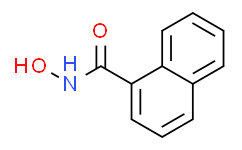
购物车0
产品总数:60942


| 商品编号 | 规格 | 价格 | 会员价 | 是否有货 | 数量 |
|---|---|---|---|---|---|
| PL03152-5mg | 5mg | ¥803.64 | 请登录 |
|
|
| PL03152-10mg | 10mg | ¥1483.64 | 请登录 |
|
|
| PL03152-50mg | 50mg | ¥5563.64 | 请登录 |
|
|
| PL03152-100mg | 100mg | ¥9272.73 | 请登录 |
|
|
| PL03152-200mg | 200mg | 询价 | 询价 |
|
|
| PL03152-500mg | 500mg | 询价 | 询价 |
|
|
| PL03152-10mM*1mLinDMSO | 10mM*1mLinDMSO | ¥890.18 | 请登录 |
|
 扫码关注公众号
扫码关注公众号